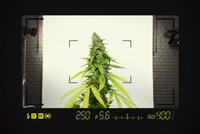- Thread starter
- #61
DrCannaCanadian
Well-Known Member
Daily Tips & Tricks

By Royal Queen Seeds
Many-Coloured Weed - What Is Colourful Cannabis And Why Does It Exist?
It has always been a mystery to most people how cannabis comes in different colours. Does it taste better? Is it more potent? Too many questions were unanswered, so here is our guide to all things colourful cannabis.
By Royal Queen Seeds
Many-Coloured Weed - What Is Colourful Cannabis And Why Does It Exist?
Judging a book by its cover is what humans do. Over thousands of years, we’ve developed into creatures that need to make decisions fast. Ever since the stone age, we’ve judged individuals, foodstuffs and housing by appearance. It’s no surprise that nowadays, we judge cannabis in the same way.
Most consumers are influenced by colour cues in their cannabis when choosing whether or not to purchase it. Consequently, dispensaries and growers have tailored their strains to fit these shocking or appealing visuals so they stand out in a weed bar.
For the past decade, new strains have started to appear with tones of blue, purple, red, orange and even black. Today, we take a look at how and why this happens.
There are several methods that growers use to alter the colour of a cannabis plant. Some changes affect the whole plant, while others affect only the buds. Some start showing tones from an early stage, while others only come to light near harvest.
The main concept to grasp here is the word “anthocyanins.” These are a group of over 400 pigment molecules present in many fruits, vegetables and flowers. They can manifest in different colours depending on the pH they’re exposed to. These molecules do not alter the taste or the smell of the plant. It’s your everyday ganja, besides the colour.
Chlorophyll, an important part of photosynthesis, is responsible for giving a plant its green colour. When matured, the plant starts producing less and less of the dominant pigment. It’s at this point that anthocyanins come through in a range of different colours. This halt in chlorophyll production can be triggered by different sets of conditions.
WHY THE POT AT THE END OF THE RAINBOW?
Much like autumn leaves, cannabis will express different colours when exposed to shorter light and temperature cycles. This will mimic the change of season, which a grower can easily replicate in an indoor grow room.
Purple, red, and blue hues come as a consequence of drops in temperature. This happens as the chlorophyll stops production naturally in autumn when the days become colder.
One of the most significant changes you can make to encourage colour variation is pH. Acidic conditions bring out the reds while alkaline fluids bring out the blue tones. As chlorophyll starts to fade near the end of the flowering phase, other predominant colours will start showing. In the red spectrum, you can see shades of yellow and orange. In the blue one, you’ll mostly get hints of purple as this is the most common colour in cannabis plants after the traditional green.
ALTERNATE METHODS
Besides temperature and pH, messing around with the light spectrum in LED lights will enhance the production of anthocyanins in the plant’s tissues. These molecules work as a sunscreen for the plant; therefore, creating stress using harsher lighting will increase its production. Here is where the boys are separated from the men. Pro growers will be able to stress the plant enough that the molecules will get the equivalent of a tan. Not so experienced cultivators, however will probably give the plant skin cancer and cause nutrient deficiencies.
Some deficiencies may come to be useful as they don’t actually kill the plant. Nitrogen deficiency in cannabis plants leads to a decrease in chlorophyll, which consequently turns the cannabis leaves yellow. Lack of phosphorous will give your cannabis darker green with purple veins or even slightly red buds. Yet, this strategy is not recommended as it’s not as healthy nor will it yield as satisfying results.
In some rare situations, strains develop genetics so dark that they appear black. These strains are most common in Vietnamese landraces. These are genetically pure strains, the ones not altered by years of selective breeding by humans. They’ve naturally evolved into strong and even psychedelic strains. Black cannabis is noted for giving strong cerebral highs with occasional visuals. But this has nothing to do with the colour.
Associating colour with a stronger high is a common misconception that most consumers experience when purchasing bud. We cannot stress this enough that colour does not equal quality nor potency. The only thing extra you might get is antioxidants. These come from the anthocyanins, but they are also present in strawberries and cherries. They’ll give you analgesic and anti-inflammatory properties, but you’re much better off eating red fruits than smoking weed for that purpose.
Not related to size or to resin production, bud colour is purely aesthetic in value. Although, further research is needed on how the presence of anthocyanins may give the strain an added entourage effect. Much like the TV series, the “entourage” effect is when certain constituents in the cannabis plant synergize to create outcomes greater than the sum of their parts.
Go out and try the craziest-coloured strain you can find. But do so with the knowledge that if this is found to be more expensive, you’ll just be paying for the look. You can now judge cannabis better and make a more conscious decision when buying your next blue-hued weed.










